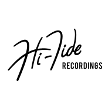RobC
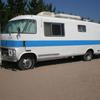
Joined: Oct 11, 2010
Posts: 152
Bainbridge Island, Washington


|

Posted on Apr 17 2014 12:45 PM
For all the budding theorists out there, here is a very simple exercise that helped me ALOT.
1) memorize the major scale starting in a position that needs no open string notes ie. start in G, third fret, E string. In this position there are two octaves before you run out of strings.
Each mode listed below is simply where you start and stop within the major scale.
No start over but start on the second note of the major scale you just played- same fingering but add one note on the end. This is the Dorian mode. (there are always 7 notes). Start again with the third note- same fingering and add two notes on the end. This is Phrygean. Keep going for a total of 7 times or 7 modes. The modes below are all the same notes it is just where you stop and start on the major scale and they all sound different.
Remember this: I (Ionian=major scale) Don't (Dorian) Play (Phrygian) Like (Locrian) My (Mixolydian) Aunt (aolian= minor scale) Lucy (Lydian)
I always mix up Locrian and Lydian- someone correct me if I am wrong.
You run out of strings pretty fast so the easiest way from me was to memorize each modal starting position on the low E string working your way up the neck. There is no trick just memorizing 7 different fingering patterns. Took me about a week at an hour or so a day.
Sorry for verbose nature of the exercise but after this gels in your head find a good instructor to put you through the paces.
Rob
|
ElBirkerio
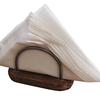
Joined: Dec 17, 2012
Posts: 519
Vienna




|

Posted on Apr 17 2014 02:28 PM
|
Strat-o-rama

Joined: Oct 23, 2007
Posts: 385
Boca Raton, Florida

|

Posted on Apr 17 2014 02:47 PM
For surf music, along with the modes, add the harmonic minor, melodic minor (ascending and descending), Spanish gypsy and Hungarian gypsy scales---and arpeggios.
|
ElBirkerio

Joined: Dec 17, 2012
Posts: 519
Vienna




|

Posted on Apr 17 2014 03:23 PM
hi!
arpeggios ... in general, it is a good idea to know chord inversions. many riffs are based on arpeggios. the one that comes to my mnd is "istanbul" by the centurions. this is of course originally a swing standard, and these guys knew their jazz theory 
yours wolfi
— http://www.surfgrammeln-san.org
https://www.facebook.com/BaluUndSurfgrammeln
http://greencookierecords.bandcamp.com/album/coming-out-soon-los-chicharrones-del-surf-10
|
el_camello

Joined: Jul 04, 2010
Posts: 369
Ottawa


|

Posted on May 14 2014 03:51 PM
Hi ncgalt1984. Your robbie-robot/guitar pictures brings much joy to my day.
Arpeggios or Chord tones are great for playing modes and scales. Sorry for the long post but I'm pretty passionate about arpeggio knowledge as it's really given my guitar playing new life.
As far as modal progressions go... I don't know have many tricks tips beyond knowing your keys and what chords typically work well together. Once you know that just change it up alittle. Example: 1-4-5 in Am = Am, Dm, Em. Change the Dm to Dmajor. I'd say learning some extended chords (7th, 9th). Guess that's not modal. Your example of G to F is good too. F is bVII in G. I find that bVII, bIII, bVI, IImaj are IIImaj are the modal (or non diatonic?) chords that I see the most.
As for scales... I tend to get more out of focusing on the chord tones of the current underlying chord. If you knowing what key you are in and know what chord you are playing over you can have scales/modes in the back of your mind so to speak.
If your progression is Am G F E and you play only chord tones over each chord you would play ACE, GBD, FAC, EG#B. Removing duplicates you are left with ABCDEFG#, or, Aharmonic minor. Most of the time you need more than those three notes per chord. The scales/modes are often built into the progression (especially when chords are extended) and if you focus on each chord and its chordtones one at a time as you the modes play themselves.
Another common surf example. Am->D. In Am the D is usally minor, now it's major. To get a dorian sound you would take the m6 of A, raise it to F#. OR, if you focus more on each chords you get Am (ACE) and D (DF#A). No need to think of dorian really, the F# is in D. So over the Am you can play some Am arpeggios, notes from Am pentatonic, notes from Aminor, anything. Then over the D chord you play D, F#, A and other notes from D major pentatonic or D major.
I do find that having a good sense of which key you are in is essentially. Having a familiarity with visualizing (and playing) modes/scales is also great help.
— -Pierre
The Obsidians! (Ottawa surf)
The Obsidians debut EP
|
Slick

Joined: Jul 02, 2013
Posts: 50
Mid-Atlantic

|

Posted on Aug 22 2014 10:11 AM
Hi All,
I agree with RobC that the modes and scales are everything. I started by playing every mode and scale, ascending and descending, until I had them memorized on the lower frets. Then I started working them up the fretboard. Another big help was alternate picking with a metronome and increasing my BPMs steadily, instead of trying to play at the speed of sound right off the bat. Then I combined the playing of the modes and the scales with the alternate picking......WOW! This practice pulled me up out of the guitar gutter. This is not theory, it is common sense. I played by ear for years as well, but this opened up my ears sooooo much. Another exercise every guitarist should do at least once a day is spider. Then play spider progressively faster using alternate (tremelo) picking. That also made a huge difference, at least for me.
Slick
— East Coast Executive Director Of The Society Of Incompleted Projects
|
TomH

Joined: Mar 15, 2006
Posts: 766
Oberlin, Ohio, USA




|

Posted on Aug 22 2014 01:39 PM
One thing that has helped me a lot to at least be able to come up with the basic major and minor scales without memorizing them or relying on boxes, is to simply take the root (1) note and, for a Major chord, the 3 note is four frets above the 1 and the 5 is three frets above the 3. To me, that's easier than memorizing the three basic notes in each chord. Then, add to that the fact that the 2 is two frets above the 1 and the 6 is two frets above the 5. The 2 also works for the minor scale (below).
So, at this point, for a Major chord with a tiny bit of math, you have the 1-2-3-5-6 major pentatonic scale. You can easily also add the 7 to this by subtracting either one fret (major) or two frets (mixolydian) from the 1. The 4 is also an easy add, but see below first.
For a minor chord the b3 is three frets above the 1 and the 5 is four frets above the 3. Pretty much the opposite of the major chord. Then, the 4 is two frets below 5 (this also works for the major scale above, which gives you the complete major scale) and the b7 is two frets below the 1. Now, you have the minor pentatonic scale (1-b3-4-5-b7). Like I said above, you can add the 2 with the same formula used for major (2 frets above 1). I don't try to add the 6 to this formula, because it can vary.
This has helped me a lot. For me it was easier to memorize a simple formula, rather than scale notes or boxes. I used to use a little cheat sheet when I was practicing, but now I automatically do the math and can come up with most of the right notes quickly on the fly. Here's what my cheat sheet used to look like:
Major Pentatonic (1-2-3-5-6)
chord notes (1-3-5)
1
3 = four frets above 1
5 = three frets above 3
2 = two frets above 1***
6 = two frets above 5
Minor Pentatonic (1-b3-4-5-b7)
chord notes (1-b3-5)
1
b3 = three frets above 1
5 = four frets above 3
4 = two frets below 5***
b7 = two frets below 1
***True for both Major and Minor
Last edited: Aug 22, 2014 13:45:02
|
IvanP
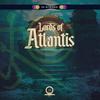
Joined: Feb 27, 2006
Posts: 10331
southern Michigan







|

Posted on Aug 01 2015 01:29 PM
Here's a very nice overview of exotic scales by Guitar Player magazine. The scale they refer to as "Gypsy" is what I think of as the "Byzantine" scale, which is the scale of "Miserlou" and many other surf songs (and this article nicely points out - though implicitly - the connection between Ritchie Blackmore and surf music, which is responsible for most of what I do  ). I've used the harmonic minor, Phrygian dominant and the Hungarian minor in my music. ). I've used the harmonic minor, Phrygian dominant and the Hungarian minor in my music.
Check it out - really cool: http://www.guitarplayer.com/lessons/1014/exotic-scales-around-the-world-in-seven-scales--tab/53334
— Ivan
Lords of Atlantis on Facebook
The Madeira Official Website
The Madeira on Facebook
The Blair-Pongracic Band on Facebook
The Space Cossacks on Facebook
The Madeira Channel on YouTube
|
ElBirkerio

Joined: Dec 17, 2012
Posts: 519
Vienna




|

Posted on Aug 01 2015 04:28 PM
|
IvanP

Joined: Feb 27, 2006
Posts: 10331
southern Michigan







|

Posted on Aug 01 2015 04:35 PM
ElBirkerio wrote:
hi ivan!
i always thought that phrygian minor and the byzantin scale are the same?
I always thought the difference was the 7th - it's a minor 7th in the Phrygian scale and a major 7th in the Byzantine scale.
— Ivan
Lords of Atlantis on Facebook
The Madeira Official Website
The Madeira on Facebook
The Blair-Pongracic Band on Facebook
The Space Cossacks on Facebook
The Madeira Channel on YouTube
|
Badger

Joined: Nov 16, 2013
Posts: 4537
Wisconsin







|

Posted on Aug 02 2015 06:18 AM
IvanP wrote:
Here's a very nice overview of exotic scales by Guitar Player magazine.
Thank you!
— Wes
SoCal ex-pat with a snow shovel
DISCLAIMER: The above is opinion/suggestion only & should not be used for mission planning/navigation, tweaking of instruments, beverage selection, or wardrobe choices.
|
psychonaut

Joined: Dec 08, 2007
Posts: 1304


|

Posted on Aug 02 2015 07:16 AM
IvanP wrote:
Here's a very nice overview of exotic scales by Guitar Player magazine. The scale they refer to as "Gypsy" is what I think of as the "Byzantine" scale, which is the scale of "Miserlou" and many other surf songs (and this article nicely points out - though implicitly - the connection between Ritchie Blackmore and surf music, which is responsible for most of what I do  ). I've used the harmonic minor, Phrygian dominant and the Hungarian minor in my music. ). I've used the harmonic minor, Phrygian dominant and the Hungarian minor in my music.
Check it out - really cool: http://www.guitarplayer.com/lessons/1014/exotic-scales-around-the-world-in-seven-scales--tab/53334
I always refer to it as the gypsy minor scale myself. Technically it's the harmonic minor scale played in the mixolydian mode, giving you a "Mixolydian flat 9 flat 13" - but it's just really a harmonic minor played from the fith interval instead of the root. I originally learned it from Blackmore too and was thrilled when I found out how much it's used in surf music (I'd love to hear Blackmore play 'Miserlou'!). I use it extensively in my solos and improvisations.
Here's a very cool and very Blackmore way to use it - pure Gypsy too:
You descend with the mixolydian b9 b13, and ascend with a diminshed scale. Pretty much covers the whoe neck

— https://www.facebook.com/coffindagger
http://coffindaggers.com/
http://thecoffindaggers.bandcamp.com
Last edited: Aug 02, 2015 08:39:00
|
IvanP

Joined: Feb 27, 2006
Posts: 10331
southern Michigan







|

Posted on Aug 02 2015 08:34 AM
Victor, this is one of my favorite Ritchie clips ever! Especially the part between 2:00 and 4:00, and especially when Ritchie switches to slide - never fails to give me goosebumps! Thank you!
— Ivan
Lords of Atlantis on Facebook
The Madeira Official Website
The Madeira on Facebook
The Blair-Pongracic Band on Facebook
The Space Cossacks on Facebook
The Madeira Channel on YouTube
|
Clarry
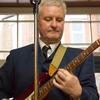
Joined: Oct 01, 2014
Posts: 519
Streatham, London



|

Posted on Aug 02 2015 10:03 AM
Have you ever heard Blacknore in sixties instro band The Outlaws?
|
IvanP

Joined: Feb 27, 2006
Posts: 10331
southern Michigan







|

Posted on Aug 02 2015 10:07 AM
Absolutely Clarry. Though you have to be careful: Ritchie was the second or possibly even third lead guitarist for the Outlaws, and recorded very few instrumentals with them. Most of the Outlaws stuff is not with Ritchie on lead, but the few tracks he did with them are pretty cool. Hobo is my favorite, a nice jazzy tune.
— Ivan
Lords of Atlantis on Facebook
The Madeira Official Website
The Madeira on Facebook
The Blair-Pongracic Band on Facebook
The Space Cossacks on Facebook
The Madeira Channel on YouTube
|
Clarry

Joined: Oct 01, 2014
Posts: 519
Streatham, London



|

Posted on Aug 02 2015 11:10 AM
IvanP wrote:
Absolutely Clarry. Though you have to be careful: Ritchie was the second or possibly even third lead guitarist for the Outlaws, and recorded very few instrumentals with them. Most of the Outlaws stuff is not with Ritchie on lead, but the few tracks he did with them are pretty cool. Hobo is my favorite, a nice jazzy tune.
And of course Chas Hodges on bass. I don't whether the band Chas and Dave reached surf side.
|
Clarry

Joined: Oct 01, 2014
Posts: 519
Streatham, London



|

Posted on Aug 02 2015 11:30 AM
|
da-ron
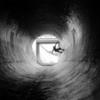
Joined: Jan 02, 2009
Posts: 1307
The original Plymouth, UK.






|

Posted on Aug 03 2015 07:26 AM
This will give me something to do this evening!
— http://thewaterboarders.bandcamp.com/
|
dp

Joined: Feb 26, 2006
Posts: 3546
mojave desert, california





|

Posted on Aug 04 2015 11:12 PM
Hungarian minor is the bomb.
|
ElBirkerio

Joined: Dec 17, 2012
Posts: 519
Vienna




|

Posted on Aug 06 2015 04:15 AM
... that's what i know as the gipsy scale, right? btw: my wife - our bass player - recently came up with a son in melodic minor ... also quite interesting as this is the stuff i never dealt with as a classic guitar strangling philistine ...
yours wolfi
— http://www.surfgrammeln-san.org
https://www.facebook.com/BaluUndSurfgrammeln
http://greencookierecords.bandcamp.com/album/coming-out-soon-los-chicharrones-del-surf-10
|














 ). I've used the harmonic minor, Phrygian dominant and the Hungarian minor in my music.
). I've used the harmonic minor, Phrygian dominant and the Hungarian minor in my music. 























